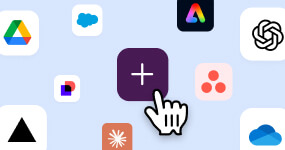Pundits have been predicting the death of email since at least 2009, when millennial blogger Alex Berger of VirtualWayfarer assured us that it was on life support. But email apparently never got the memo, since it’s not only still going strong but actually growing. Statista predicts that the number of active email users will grow from 4 billion in 2020 to 4.6 billion in 2025 and that the number of daily emails sent will grow from 306.4 billion to 376.4 billion in the same time frame. This is thought to be due to increasing usage by those under age 15 and over age 65.
However, numbers don’t tell the whole story. Email, which turned 50 in 2021, is no longer the best solution for most modern offices. It is likely to continue to play an important role for some time, but recent changes in the workplace have magnified its limitations and challenges.
In particular, the global pandemic and subsequent shift to remote work forced companies to embrace new tools. And remote and hybrid work appear to be here to stay. According to a 2021 PwC survey, 83% of employers rated remote work as a success. And in a 2021 Statista survey, 66% of company leaders reported that they are rethinking workspaces to support hybrid teams long-term. Much of this success can be attributed to asynchronous communication tools beyond email.

What’s wrong with email?
Nothing is inherently wrong with email. It’s changed and evolved with the times, and an email sent in 2022 bears little resemblance to the clunky notes of the 1970s. However, there are several challenges inherent to the medium that more modern tools have largely solved:
- Lost information. Who among us hasn’t participated in a multi-user email thread that devolved into total confusion? Are you replying to the right person or people? Are you sure you caught the vital info at the bottom of a lengthy reply thread? Did you cc everyone relevant? Or would it be better to bcc so that recipients don’t see each other’s addresses?
- Irrelevant emails. Like most people, you probably get dozens of emails a day. Some of them are urgent. Several are important. And the rest are a mix of spam and advertisements. How do you dig through the mess, and how much time are you wasting on the task?
- Drop in productivity. Email notifications trigger a dopamine release in the brain. This feel-good chemical can induce you to keep checking your email throughout the day. But constant email checking also results in a heightened state of arousal that can make it tough to get other things done.
- Impersonality. In these days of remote and hybrid teams, employers strive to build and maintain a strong work culture. Email lacks the human touch, making remote workers feel more isolated rather than more connected.
What could replace email
Probably nothing will ever fully replace email. A low-bandwidth option that nearly everyone is familiar with, email seems destined to live a long life. But its importance is being usurped by new tools and methods that solve its challenges.
Those alternatives are both more streamlined and more personal. Text messaging, recorded videos and marked-up screen captures are just a few solutions that promote collaboration and reduce the risk of lost information. But to truly take your company to the next level, you’ll need a collaboration platform such as Slack to bring it all together.
Can Slack replace email? To a large extent, yes. Slack offers seemingly endless ways to customize communications and collaboration throughout your workforce. You can create dedicated channels for different projects or teams, keeping all relevant information neatly organized in one spot. If you need to get someone’s attention, you can easily tag them with a notification rather than hoping they notice your email. And you won’t have to worry that you’ve forgotten to include someone in the conversation chain, since everyone in a particular channel will see all messages in that channel. You can even create a virtual watercooler, giving employees somewhere to gather and relax with off-topic conversations.
Slack also allows you to seamlessly integrate various additional tools—including email. Email becomes just another part of a more cohesive solution for employees.
Putting it all together
Email, with its global familiarity, will likely never truly die. But it is no longer enough for most remote and hybrid teams. When you can’t walk down the hall for a face-to-face conversation, you need solutions that can better replicate that experience asynchronously. Slack, especially in tandem with other tools such as recorded videos, chat and living documents, offers a comprehensive solution that each company can tailor to its individual needs.






